MXA RACE TEST: THE REAL TEST OF THE 2019 YAMAHA YZ250F
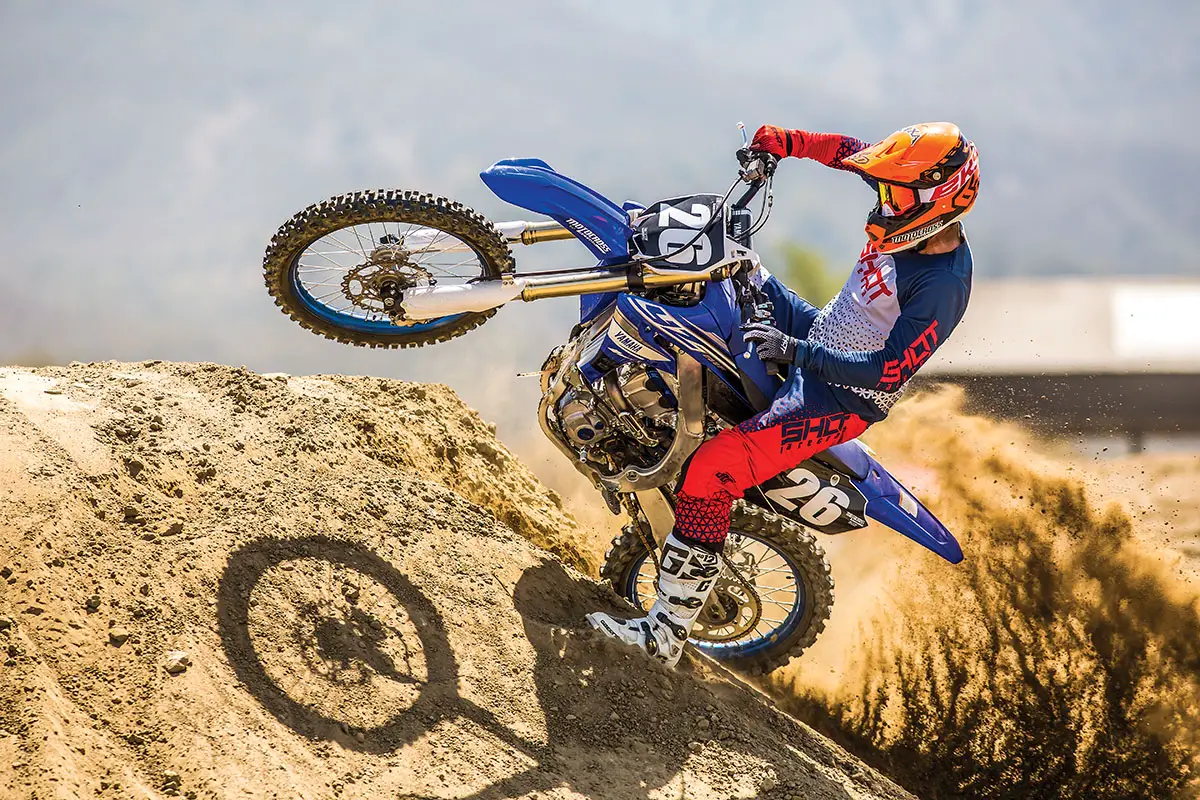
Q: FIRST AND FOREMOST, IS THE 2019 YAMAHA YZ250F BETTER THAN THE 2018 YZ250F?
A: The 2019 Yamaha YZ250F is better in every major category, save for the weight department. With the addition of an electric starter, the all-new YZ250F gained 5 pounds, going from 222 pounds to 227 pounds. That pushes it way over the 218-pound KTM 250SXF. For those who think added weight doesn’t make a difference, you have been brainwashed by manufacturers’ agendas. There is a reason that every factory race team since the dawn of time has spent countless dollars trying to get its bikes down to the legal minimum weight.
Q: WHAT CHANGES WERE MADE ON THE 2019 YAMAHA YZ250F?
A: The 2019 YZ250F offers a bevy of updates. It now has the same chassis as the latest YZ450F. The engine has updates to the head and piston, while the bottom end has remained virtually the same. Here is a breakdown of the major updates for 2019.
(1) Cylinder head design. There is a straighter exhaust port outlet at the head pipe connection. There is a smoother intake port shape that increases the intake port flow rate.
(2) Valve train. The intake camshaft valves have 0.4mm more lift with an increased working angle of 8 degrees. The exhaust camshaft event angle was decreased by 5 degrees. Both exhaust (22.5 to 24.5mm) and intake (24.5 to 27mm) lifter buckets have been increased in size.
(3) Piston. The new piston has a redesigned crown shape that increased the compression ratio from 13.5:1 to 13.8:1.
(4) Throttle body. Yamaha switched from a Keihin 44mm throttle body to a Mikuni 44mm throttle body. The cold start is pushed in like a KTM’s as opposed to being pulled out. Pushing the “choke” in instead of pulling it out results in a larger angle for the throttle valve so it gets more airflow for easier starting. The cold-start button will pop out, then the throttle is closed.
(5) Exhaust. The head pipe shape is updated and the muffler is rubber mounted.
(6) Spark plug. A normal spark plug has one electrode, while the 2019 YZ250F uses a duel-electrode spark plug (LMAR9E-J). A spark plug cap holder has been added, which is great, as we have had countless issues in the past with the cap popping off.
(7) Clutch. The plate diameter has increased 7mm, from 137mm to 144mm. There are now six instead of five clutch springs, and there is one less friction plate. The steel drive plate thickness is increased from 1.2mm to 1.6mm.
(8) E-start. The electric-start electric motor is positioned behind the engine’s cylinder; however, it is further back on the cases than the 2019 YZ450F starter motor. We had issues with rocks getting stuck in between the cases and the motor. Yamaha fixed the issue on the 2019 YZ250F. The lithium-ion battery has a capacity of 13.2 volts.
(9) Frame. The bilateral-beam aluminum frame now has straight tank rails that replace the previous hydro-formed S bends. The head tube has been moved 6mm. The frame’s cross brace is now double the length, which increases the triangulated absorption zone. The changes to the frame have stiffened it 25 percent vertically, 9 percent horizontally and 15 percent torsionally.
(10) Engine mounting. The engine has been angled forward 1 degree to a 5.2-degree lean angle. The upper engine brackets were moved to the rear of the head, and the material changed from steel to aluminum.
(11) Seat. The seat is 8mm lower in the middle and 19mm lower at the rear fender. It is also 18mm narrower.
(12) Wheel collars. The wheel collars were one of the very few updates to the 2019 YZ450F. The same changes were made on the 2019 YZ250F. Although they are small changes, the more rigid front and rear wheel collars make a big difference.
(13) Suspension. The Kayaba SSS coil-spring forks get a bigger cylinder and piston size. The mid-speed valve has been changed from a coil spring to a leaf spring. The fork spring rate was stiffened from 4.6 N/m to 4.7 N/m. The shock’s sub-tank capacity was increased 30cc, and the spring rate was upped from a 54 to 56 N/m.
(14) Radiators. The radiators have been moved 6mm closer to the frame and are 6 degrees more vertical.
(15) Fuel tank. The fuel capacity was lowered from 1.9 gallons to 1.6, allowing the tank width to be narrowed 16mm at the front.
(16) Shrouds. The shrouds no longer bow out due to the different radiator position.
(17) Airbox. The airbox offers a tool-less air filter cover that uses one Dzus fastener instead of three as on the 2018 YZ250F.
(18) Maps. Instead of having to buy the Yamaha GYTR Power Tuner to change maps, you can now change maps via your smartphone by downloading the Yamaha Power Tuner app. There is also a map switch on the handlebars that allows you to switch from the stock map to your programmed map.
Q: HOW DOES THE 2019 YZ250F RUN ON THE DYNO?
A: From the crack of the throttle to 6100 rpm, the 2018 YZ250F outperforms the 2019 YZ250F by as much as 4 horsepower (specifically from 4500 to 5000 rpm). At 6100 rpm, the two power curves meet and run almost identical to each other until 11,200 rpm. The 2018 YZ250F, however, is 1/4 horsepower up from 7000 to 8000 rpm and 1/2 horsepower up from 8700 to 9200 rpm. At 11,200 rpm, the 2019 YZ250F kicks in the afterburners, producing an added 1.20 horsepower at the 12,900-rpm peak. That is a 700-rpm gain from 2018. The YZ250F’s 41.76 horsepower would put the 2019 YZ250F as third in the power rankings, with the KTM 250SXF making 42.65 and the Husqvarna FC250 making 42.53.
Q: HOW DOES THE 2019 YAMAHA YZ250F RUN ON THE TRACK?
A: Everyone felt that the YZ250F was faster than its predecessor throughout the entire rpm range, even though it didn’t show that on the dyno. The 4-horsepower gap from 4500 to 5000 rpm is too low in the power range for a serious 250 four-stroke rider to utilize on the majority of racetracks. Whereas last year’s YZ250F lacked top-end power and would fall off so quickly that riders had to shift early or risk having the next gear fall off the pipe, the 2019 YZ250F engine is more in sync with the current trend for high-rpm, wide-open, top-end powerbands. With the extra pony power and 700 extra rpm, the 2019 YZ250F pulls each gear longer, making for a significant improvement in gear-to-gear power transfer.
That said, most MXA test riders felt that the YZ250F powerband could be better, especially if it wants to compete in the high-rpm stratosphere with the Husky, KTM and Honda. Most test riders wanted about 1000 rpm more over-rev to allow the next gear to be picked up with the revs closer to where the meat of the upper-end powerband was. They felt that Yamaha’s new top-end powerband wasn’t top end enough.
Q: COULD THE POWERBAND BE ALTERED TO BETTER SUIT THE GEAR-TO-GEAR LAG?
A: Yes, via your smartphone. If you don’t own a smartphone, then ask a 13-year-old kid to help you. The 2019 YZ250F has a small black box that is located behind the left-side panel called the Communication Control Unit (CCU). The unit puts out weak radio waves that act as a WiFi signal. When you connect to the WiFi signal with your smartphone, it is going to ask for a password. The password is located on the CCU. It is the S/N number. After you connect your bike to the app, you are ready to start tuning.
There are many functions to the Yamaha Power Tuner app, but we are going to focus on the mapping feature. There are three preprogrammed maps in the app—Hard Hitting, Linear Torque and Smooth Linear. We didn’t like any of them. We tried many different maps, but we found that the best setting was the Travis Preston map. It made the power livelier in the midrange, pulled harder through the top and revved out further. This allowed the power to pull far enough in the rpm range to pull the next gear in the meat of the powerband. This allowed riders to clear jumps better, use the clutch less in corners and ultimately made the bike easier to ride.
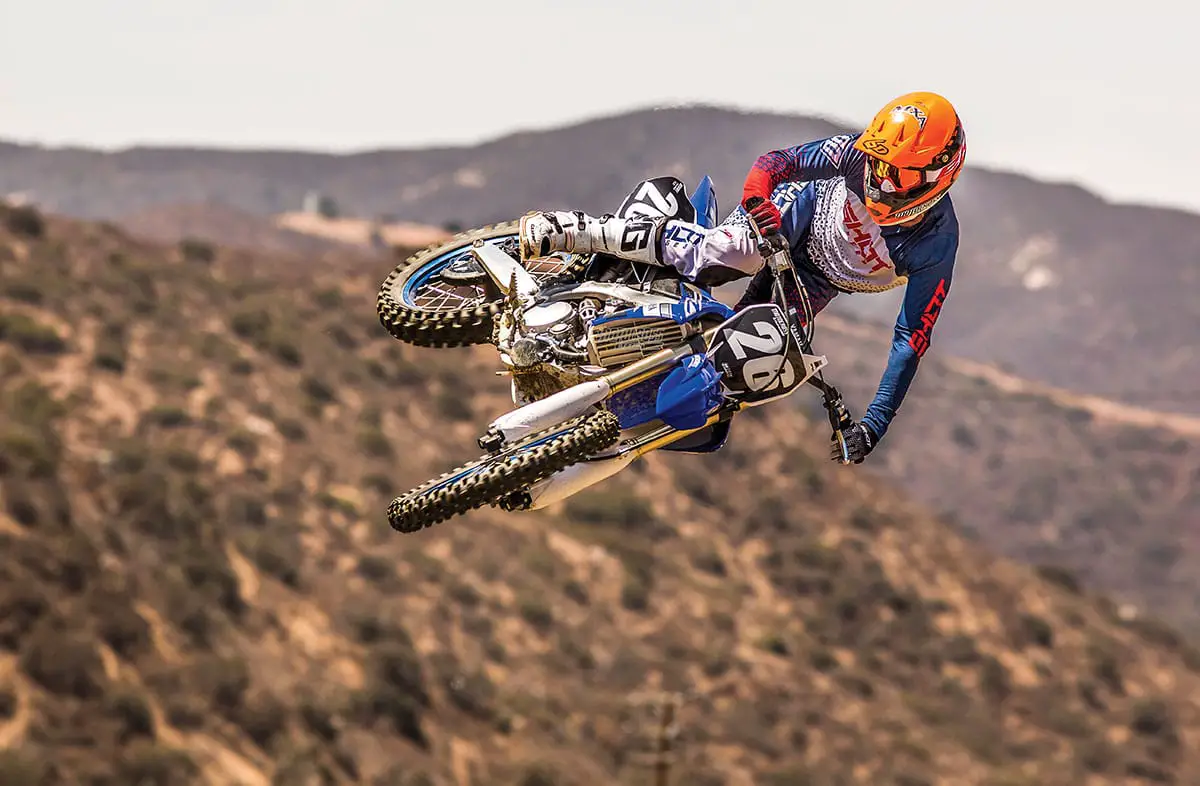
Q: IS THE 2019 YZ250F FASTER THAN THE 2019 KTM 250SXF?
A: Yes and no. Just like last year, the YZ250F outperforms the 250SXF from bottom to mid—although now the YZ250F offers more top-end power to close the gap on the 250SXF. However, the KTM 250SXF revs an extra 1100 rpm—and produces its peak horsepower at 14,000 rpm. For riders who use every ounce of power on a 250F and aren’t afraid to hold the throttle to the stops until they hit 14 grand, the KTM 250SXF is the perfect engine. If you are looking for an easier-to-ride bike, the 2019 Yamaha YZ250F is for you. The YZ250F may not be as powerful, but it offers good power in very usable spots in the powerband.
Q: HOW DID THE 2019 YZ250F HANDLE?
A: The most notable difference from the 2018 to 2019 chassis is the front-end pressure. The front wheel feels glued to the ground when coming into corners. The added pressure allows riders to point and shoot. It isn’t as agile as the KTM 250SXF coming into corners, but it is more consistent. The 250SXF will turn sharper and move where you want to faster, although the 2019 KTM 250SXF’s handling is very sensitive. Most riders liked the soft handling feel of the YZ250F better.
The chassis of the YZ250F was balanced without any adjustment and tracked straight as an arrow. When riding the YZ250F and 250SXF back to back, the YZ-F’s added weight on jumps, when laying it into corners and in side-to-side switchbacks is noticeable.
Q: WHAT DID WE THINK OF THE KAYABA SUSPENSION COMPONENTS?
A: They are good. No complaints. The SSS suspension handles better in big whoops and has more of a hold-up feel than in 2018. We felt that the stiffer fork springs made the middle of the stroke a bit harsh. Most MXA testers went stiffer on the compression and the ride got suppler. This lessened the SSS suspension’s tendency to bottom on big jumps or under fast riders.
Q: WHAT CAN YOU DO TO MAKE THE YZ250F BETTER?
A: There are two things you can do to make the 2019 YZ250F a better bike for you.
(1) Gearing. Stock gearing is 13/50. Last year slower riders went up a tooth on the rear sprocket to a 51, but faster riders felt the powerband was too short with the lower overall gearing. This year, with the longer pull, more test riders chose the 51, although it was still a split decision. If you liked the 51 last year, you will like it better this year, as you don’t have to short-shift, especially if you install the Travis Preston map.
(2) Airbox. We drilled two 1-1/4-inch holes on the top of the airbox cover with a spade drill bit. This extra air gave the engine a stronger top and more over-rev. Every rider liked the extra oomph. Since the airbox is located above the gas tank, the air filter still stays pretty clean—although it does get noisier.
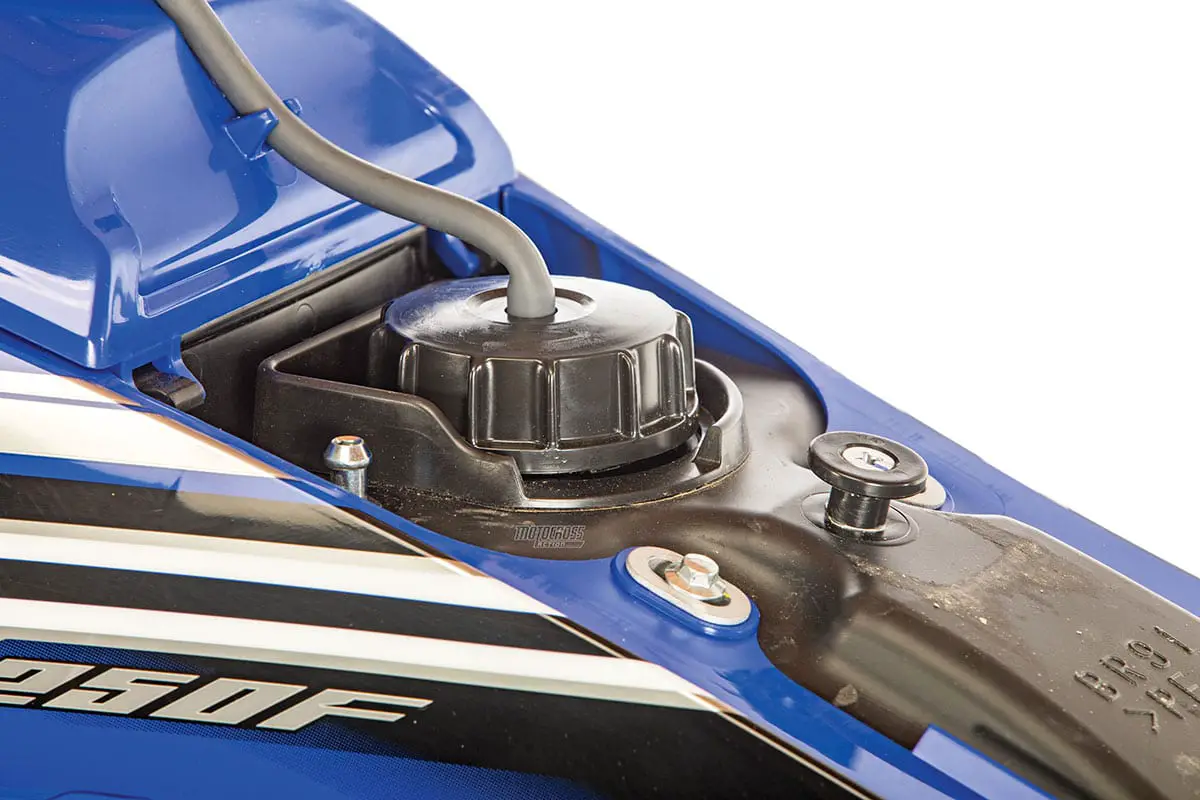
Q: WHAT DID WE HATE?
A: The hate list:
(1) Rear fender. When grabbing the rear fender to put the YZ250F up on a bike stand, it feels like the rear fender is going to break off. It needs to be reinforced.
(2) Weight. Adding electric start added 5 pounds to the bike, making it 9 pounds heavier than the KTM 250SXF. Don’t think for a minute you won’t feel it.
(3) Width. Even though it is narrower than last year’s YZ250F, the 2019 model still feels wide. Yamaha’s engineers had plenty of room to narrow the shrouds; we don’t know why they didn’t. We took the side shrouds off and peeled the 6mm-thick foam from both sides. This helped. Cycra Racing is already working on much narrower shrouds so the bike doesn’t feel as wide.
(4) Fall-off. We love that Yamaha added more top-end power and over-rev, but it is not enough. The power falls off when making shifts. It is hard to explain why both Yamaha and Honda designed engines that were optimized to rev to 14,000 rpm and then put rev limiters in 1000 rpm sooner. Our guess is that they were concerned about reliability at 14 grand and were willing to give up power and usability for safety. At 14,000 rpm, this would be the complete machine.
(5) Price. The Yamaha YZ250F is $493 more than the 2018 model at $8192. It is the third most expensive 250 four-stroke for 2019. It is still $807 cheaper than the KTM 250SXF. But, to make it as fast and as light as the KTM, you are going to have to spend that $800 pretty quickly.
(6) Filter. We didn’t have as big of an issue with dirt getting sucked through the YZ250F engine as with the YZ450F—although it is too close for comfort. We switched to the trick Twin Air filter to be safe.
(7) Front brake. Bleed the brake fluid after the first ride. It comes down the assembly line a little mushy. The Big Four Japanese brands are chasing KTM’s Brembo brakes, but they have a ways to go.
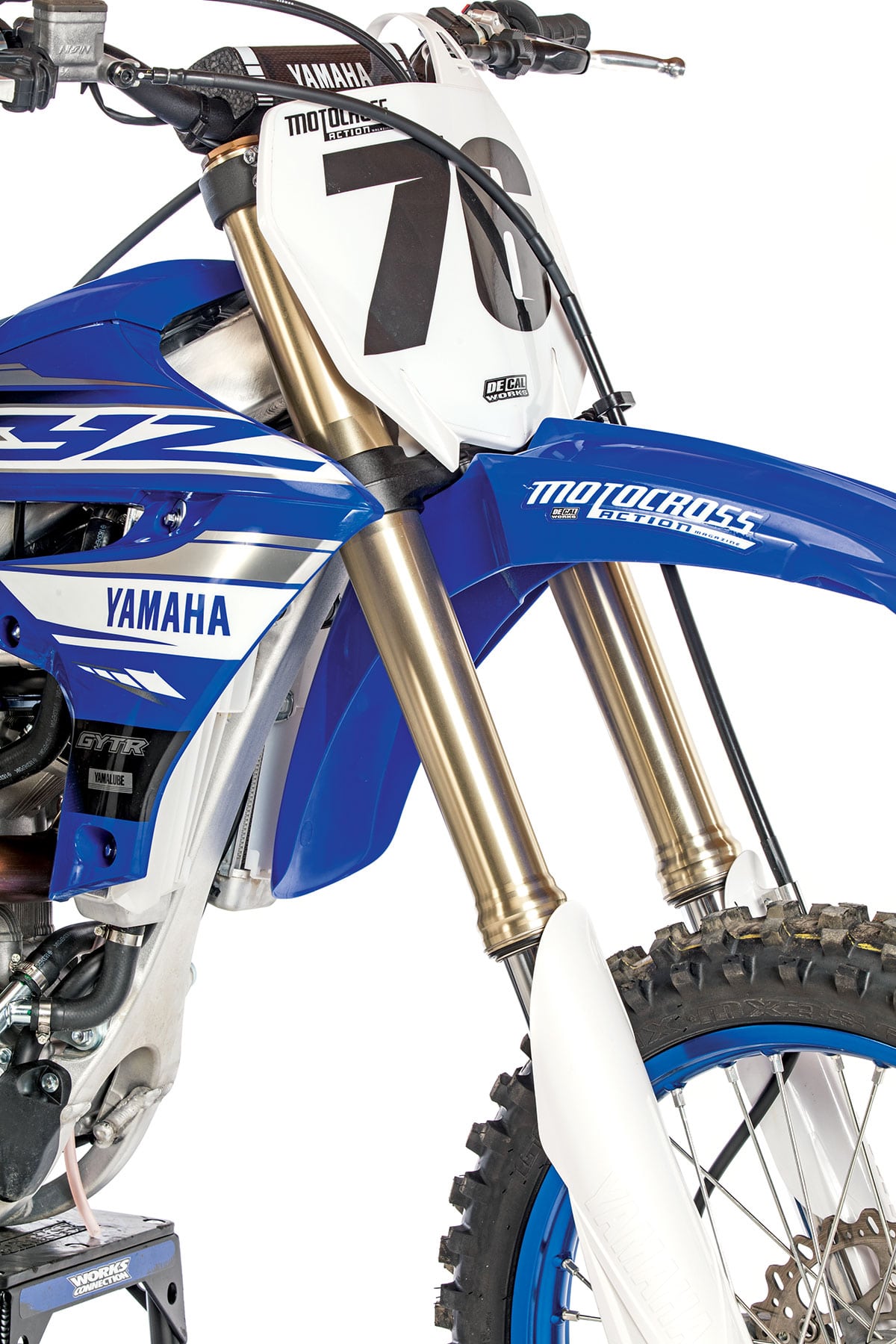
Q: WHAT DID WE LIKE?
A: The like list:
(1) Suspension. We have mixed feelings about the choice of fork springs. They are better and worse at the same time. That said, Kayaba SSS components are still great.
(2) Engine. We vastly prefer the high-rpm 2019 YZ250F engine over last year’s low-to-mid powerband. It has a much racier feel, more power and a longer pull.
(3) Seat. All riders loved the lower ride height of the seat. The front part of the seat that pops off to allow access to the gas cap is also much easier to remove.
(4) Gas cap. No more issues with getting the gas cap off.
(5) Wi-Fi. We love that we can tune the mapping for free.
(6) Clutch. The clutch pull is so soft that it feels as though it will be fried by mid moto. The clutch lasted longer than we expected.
Q: WHAT DO WE REALLY THINK?
A: The 2019 Yamaha YZ250F is a better overall bike, hands down. Yamaha is getting close to making a complete package. Riders who are slow, fast, skinny or fat can jump on this bike and feel at home. That wasn’t true of last year’s Novice-style low-to-mid powerband; however, it mystifies us that the bikes of the Big Four keep getting heavier instead of lighter. Six years ago, the KTM 250SXF weighed 231 pounds and the Yamaha YZ250F weighed 218 pounds. My how the tables have turned.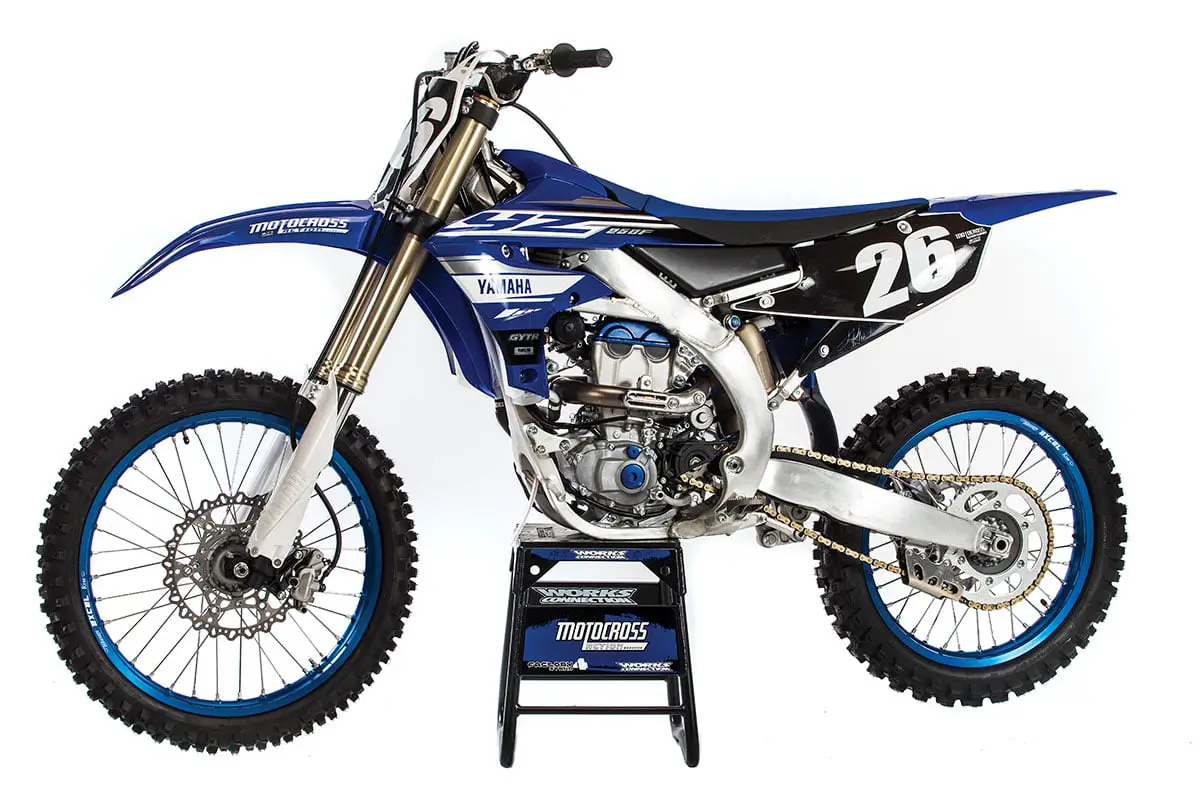 Think of the 2019 Yamaha YZ250F as a YZ450F with a smaller engine. Not only does it have electric starting, but the cylinder is angled 1 degree more upright, the radiators are closer to the frame, the clutch is beefier and horsepower is up.
Think of the 2019 Yamaha YZ250F as a YZ450F with a smaller engine. Not only does it have electric starting, but the cylinder is angled 1 degree more upright, the radiators are closer to the frame, the clutch is beefier and horsepower is up.
MXA’S YAMAHA YZ250F SETUP SPECS
This is how we set up our 2019 Yamaha YZ250F for the track. We offer these settings to help steer you in the right direction.
KAYABA SSS FORK SETTINGS
These are awesome forks. If you are under 150 pounds, consider dropping the fork springs to last year’s 4.6 N/m rate. You can also lower the oil height in 5cc increments until the desired performance is achieved. Most MXA test riders felt that the fork springs were sufficient for a wide range of rider weights and speeds. For hardcore racing, we recommend this fork setup for the 2019 Yamaha YZ250F (stock specs are in parentheses):
Spring rate: 4.7 N/m
Compression: 9 clicks out (11 clicks out)
Rebound: 9 clicks out
Fork-leg height: 5mm up
Notes: Faster riders went 5 to 7 clicks stiffer on the forks so they wouldn’t bottom.
KAYABA SSS SHOCK SETTINGS
We love this shock, although the rear wants to wallow. Turning the rebound in will help with that feeling. Once we got the settings dialed, it worked for lightweights and heavyweights. Only the sag needed to be adjusted. For hardcore racing, we recommend this shock setup for the 2019 Yamaha YZ250F (stock specs are in parentheses):
Spring rate: 55 N/m
Race sag: 105mm
Hi-compression: 1 turn out
Lo-compression: 10 clicks out
Rebound: 8 clicks out (11 clicks out)
Notes: Lighter riders went out on high-speed compression to absorb chop better.


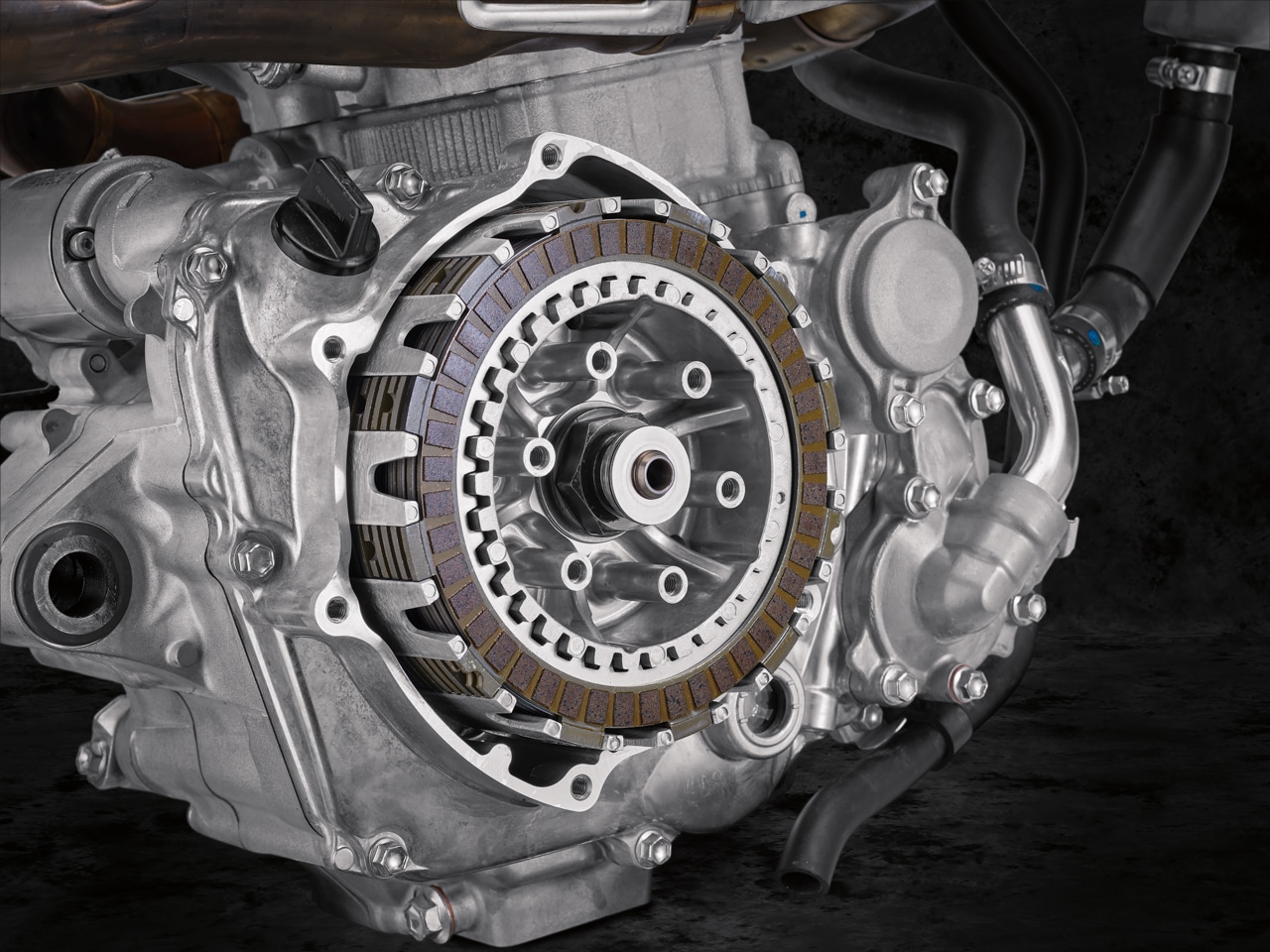
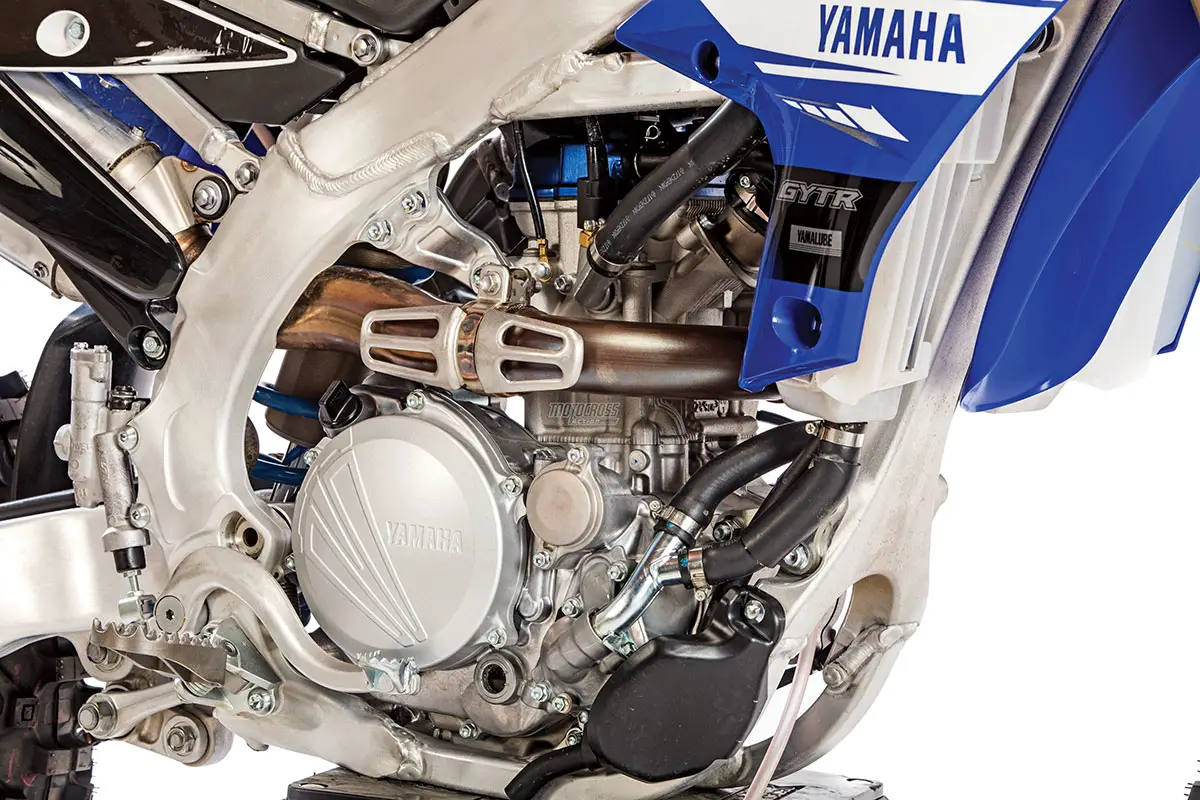
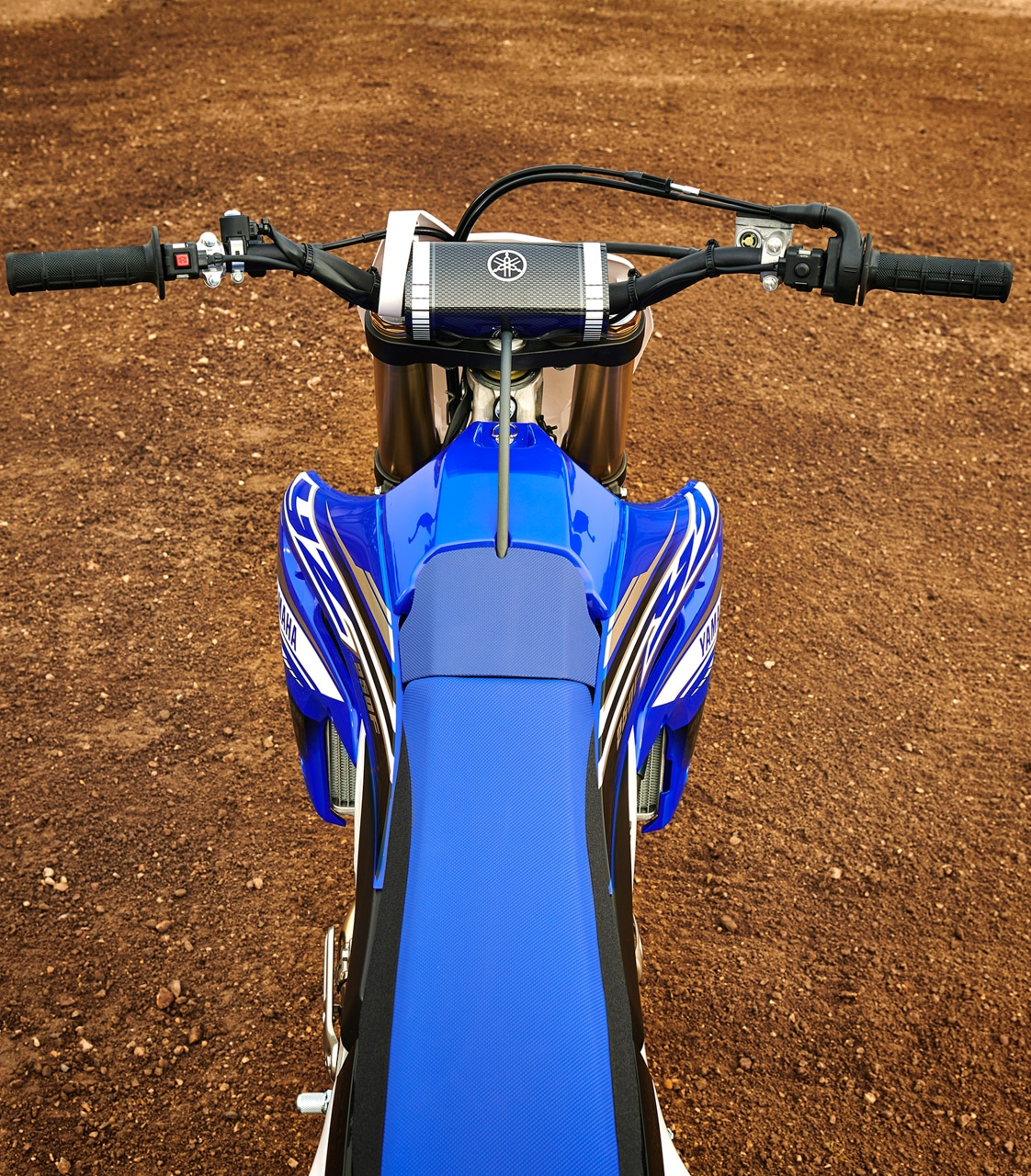
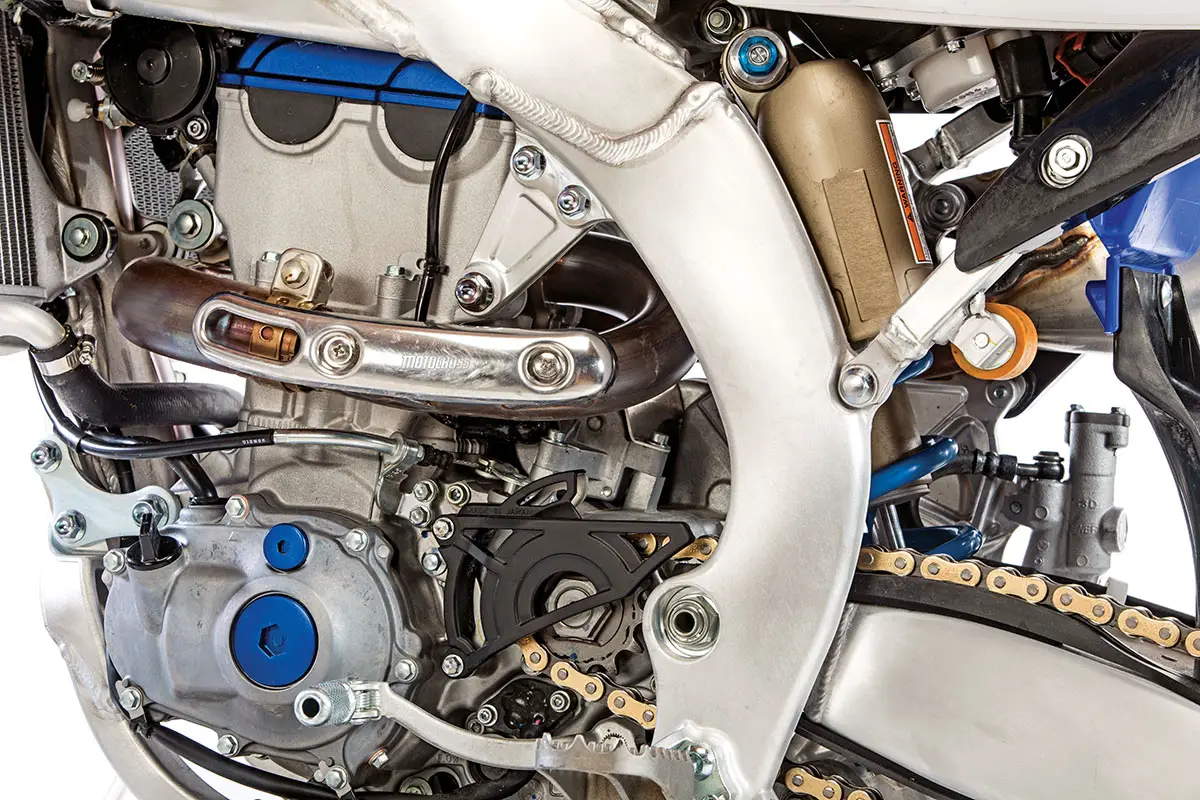
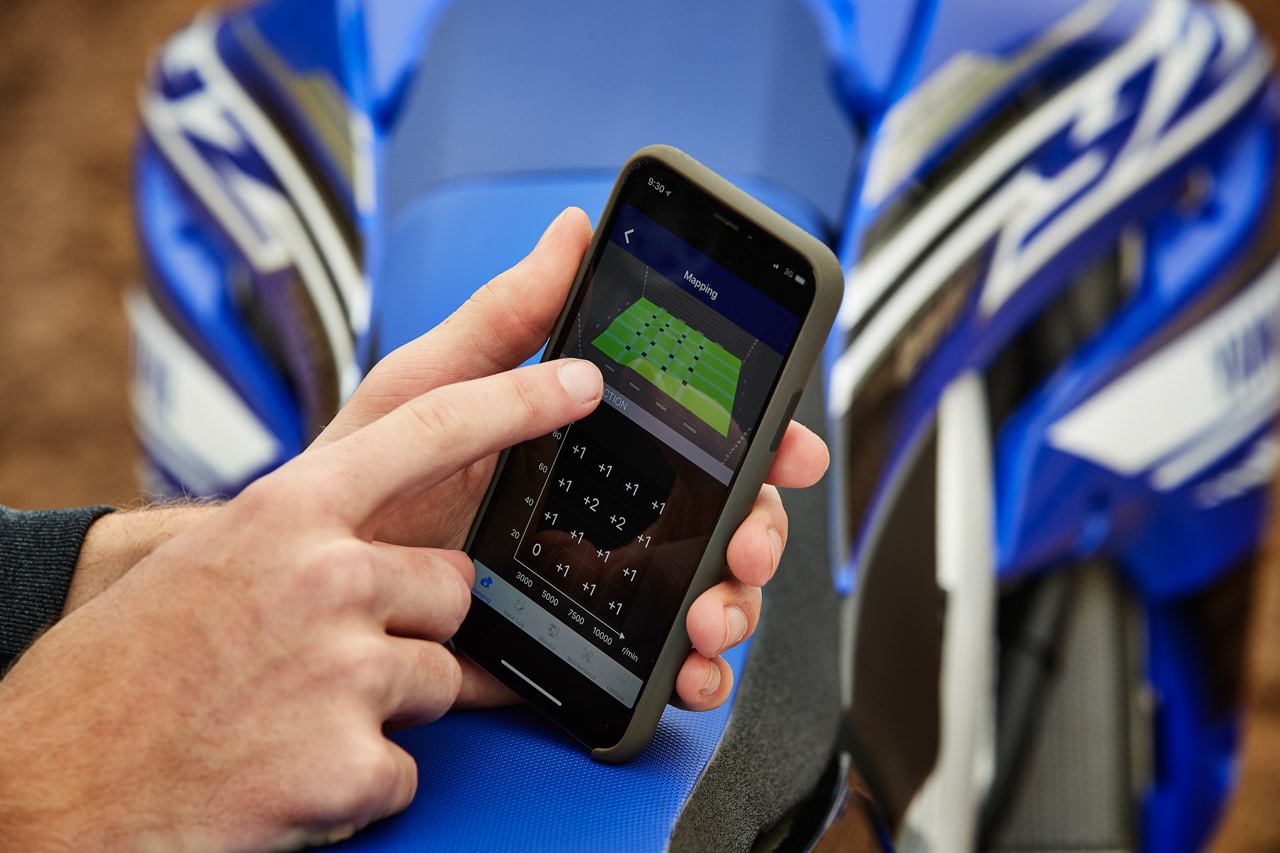




Comments are closed.